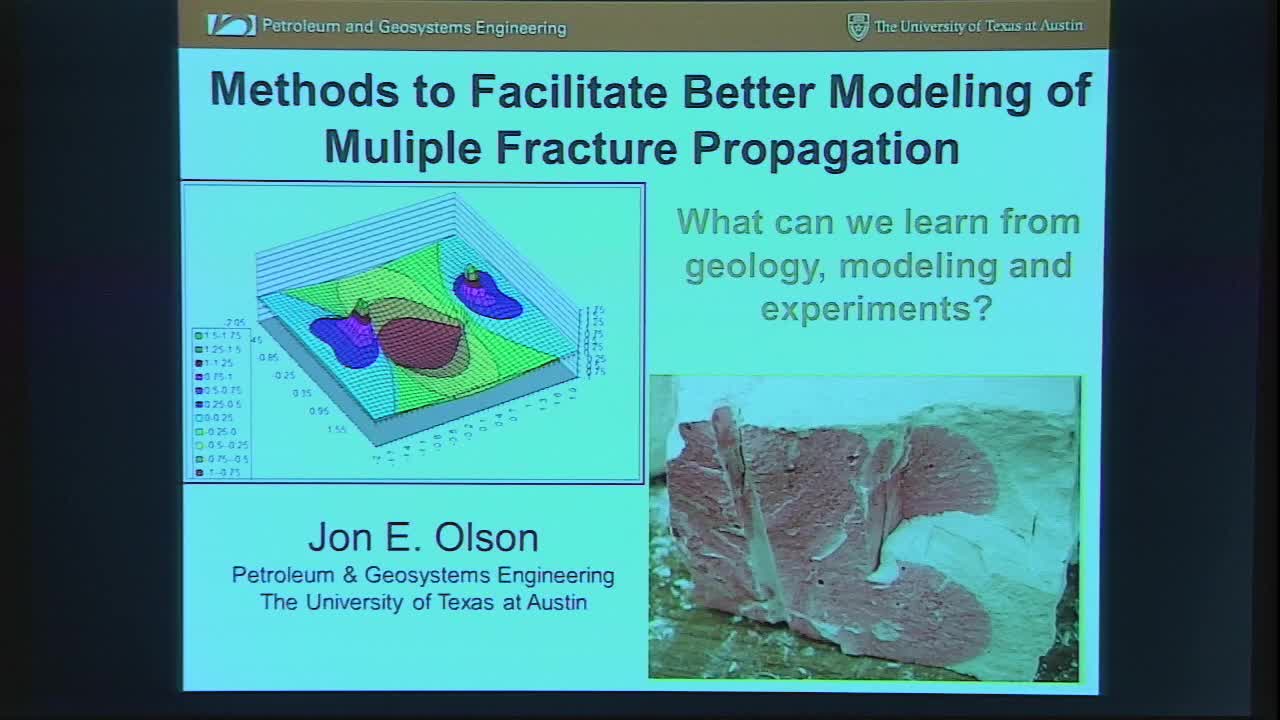Methods to Facilitate Better Modeling of Multiple Fracture Propagation
Presenter
May 14, 2015
Keywords:
- Propagation
Abstract
Multi-fracture propagation is a key capability required for the design of hydraulic fracture treatments in horizontal wells. It is also a key element of natural fracture pattern characterization. In shale, the interaction of hydraulic fractures in natural fractures is often a controlling factor in determining fracture network geometry. Insights into the range of fracture network geometries possible can come from geologic examples of natural fractures and from analog laboratory experiments of hydraulic fracturing. The modeling aspects we have focused on in order to simulate the complex behavior inherent in multi-fracture propagation from horizontal wells is the characterization of a fracture interaction/intersection model and methods to reduce computation time without significantly reducing accuracy. Our fracture interaction model is based on the energy release rate criterion, and we have performed laboratory experiments to quantify the strength of natural fracture vein fill relative to the surrounding shale matrix. With regard to computation time, we had been using a two-dimensional plane strain model with a 3d correction factor. We have subsequently moved to a fully three-dimensional base code and simplified the equations by only allowing vertical fractures. Further computation time reduction was made possible by introducing a correction factor that improves accuracy for cases of reduced discretization in the vertical direction (i.e., only using one row of elements).
